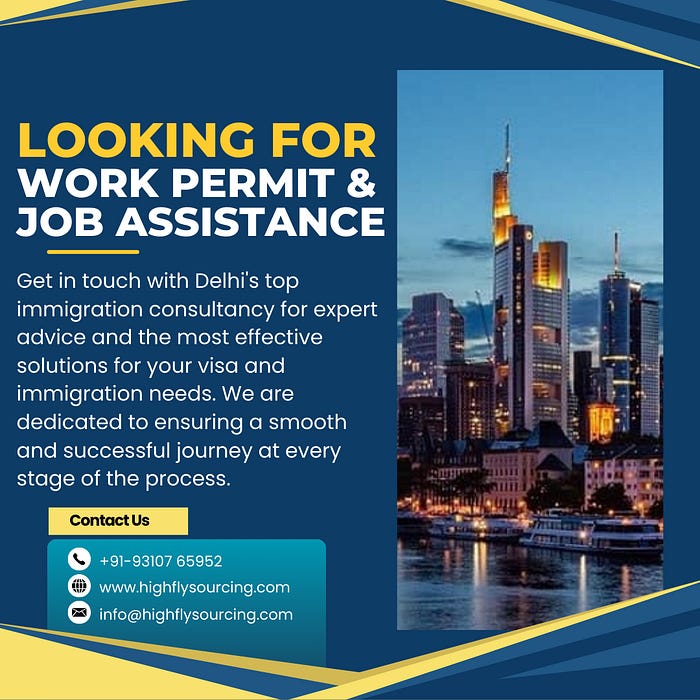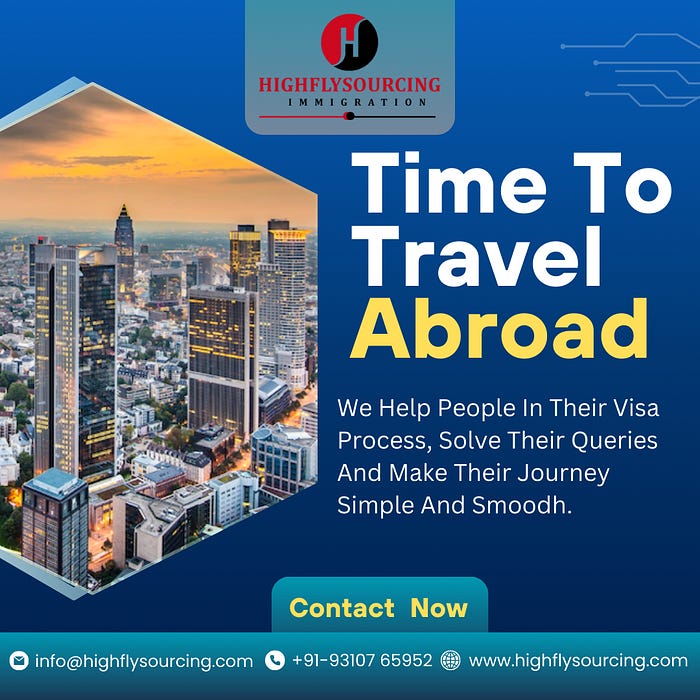The immigration process can be complex, particularly when navigating family sponsorship programs. The desire to reunite with loved ones is universal, but achieving that goal can be challenging without understanding the nuances of immigration laws, eligibility criteria, documentation, and procedural timelines. Family sponsorship offers a pathway for citizens or permanent residents of a country to bring their close relatives into the country, but it is a highly detailed and often overwhelming process.
In this comprehensive guide, we will explore how to navigate the family sponsorship immigration process, the various types of family sponsorship available, the general application process, and how a visa immigration consultancy can help streamline this journey.
What Is Family Sponsorship?
Family sponsorship refers to the process by which citizens or permanent residents of a country can sponsor their relatives to join them in the country. It is a key element of immigration policies in many countries, including the United States, Canada, the United Kingdom, Australia, and others.
Typically, the process allows sponsors to apply for the immigration of immediate family members like spouses, children, parents, and dependent relatives. The aim of family sponsorship is to ensure families can live together, promoting emotional well-being and cultural integration.
Who Can Be Sponsored?
The family members eligible for sponsorship depend on the immigration laws of the country. While there are slight variations from one nation to another, the common categories of relatives that can be sponsored typically include:
- Spouse or Common-Law Partner: In many countries, spouses and common-law partners of citizens or permanent residents are eligible for family sponsorship.
- Children: Dependent children, or those under a specific age (often under 18 or 21), are frequently eligible to be sponsored.
- Parents and Grandparents: Some countries, like Canada, allow citizens or permanent residents to sponsor their parents or grandparents.
- Other Relatives: In certain cases, siblings, aunts, uncles, or even cousins may be eligible for sponsorship if they can prove dependency or a close family bond.

Understanding the Family Sponsorship Process
The process for family sponsorship may seem daunting due to its detailed requirements, paperwork, and waiting times. However, by following the correct steps and meeting all eligibility criteria, it is possible to successfully navigate this path. Below are the general stages involved in the family sponsorship process:
Step 1: Assess Eligibility
Before you begin the sponsorship process, you must determine if you are eligible to sponsor a family member. The key eligibility requirements for the sponsor typically include:
- Citizenship or Permanent Residency: The sponsor must be a citizen or a permanent resident of the country.
- Age: The sponsor should be of legal age, usually 18 or older.
- Ability to Support: The sponsor must demonstrate the financial ability to support their relatives without relying on government assistance.
- Relationship Status: The sponsor must be able to prove the familial relationship with the person they intend to sponsor.
For the person being sponsored, they must generally be in good health, have no serious criminal record, and meet other specific requirements set by the immigration authorities.
Step 2: Gather Documentation
Once eligibility has been confirmed, you will need to prepare various documents for the application. Common documents required include:
- Proof of citizenship or permanent residency for the sponsor.
- Marriage certificate, birth certificates, or proof of relationship for the sponsored individual.
- Proof of financial capability from the sponsor, such as income tax returns or employment records.
- Police clearance certificates, medical exams, or any other requirements that the immigration authorities may request.
The documents needed can vary significantly from country to country, so it’s vital to consult with the relevant immigration authorities or a visa consultancy for accurate guidance.
Step 3: Submit the Application
The application for family sponsorship must be completed and submitted either online or in paper form, depending on the country. In most cases, the sponsor submits a petition, and the applicant must submit their visa application.
It’s essential to ensure that all forms are filled out accurately and that all required documents are included to avoid delays. Missing information or improper documentation can result in the rejection or delay of the application.
Step 4: Wait for Processing
After submitting the application, there is a waiting period. Processing times vary widely depending on the country, the type of family sponsorship, and the specific circumstances of the application. For instance, a spouse or child might have a faster processing time than a parent or sibling.
During this time, the immigration authorities may ask for additional documentation or conduct interviews to verify the legitimacy of the sponsorship.
Step 5: Receive Approval and Immigrate
Once the application is processed, the family member being sponsored will receive approval, and they can proceed with their immigration. Depending on the country’s policies, they may be required to attend an immigration interview or go through additional steps, such as biometric screening, before receiving their visa.
Challenges of Family Sponsorship
While family sponsorship is designed to help families reunite, it can come with its own set of challenges:
- Long Waiting Times: Some countries have long waiting periods for certain categories of family sponsorship. For instance, sponsoring parents or siblings may take years.
- Stringent Eligibility Criteria: The application process can be very specific in terms of financial requirements and proof of relationship, and any discrepancies can lead to delays or denials.
- Increased Scrutiny: Immigration authorities may be very thorough in assessing the legitimacy of the relationship between the sponsor and the person being sponsored, leading to additional questioning or requests for more evidence.
How a Visa Immigration Consultancy Can Help
Navigating the family sponsorship process can be overwhelming for many people, especially if they are unfamiliar with immigration laws and procedures. This is where a visa immigration consultancy can make a significant difference. Here are several ways a visa consultancy can assist:
Expert Guidance
Visa immigration consultants are experts in the field and are well-versed in the intricate details of family sponsorship programs. They can provide you with clear advice on the eligibility criteria, documentation, and the best steps to take. With their knowledge, you will be better prepared to handle the complexities of the process.
Document Preparation and Verification
The paperwork involved in family sponsorship can be daunting, and even small errors can lead to delays or denials. A visa consultancy can assist in preparing and verifying all necessary documents, ensuring that everything is in order before submission.
Filling Out Forms Accurately
Visa consultants are trained to fill out application forms correctly, avoiding common mistakes that might lead to application rejection. They can also ensure that forms are submitted on time, avoiding costly delays.
Personalized Assistance
Every family sponsorship case is unique. A visa consultancy can provide tailored advice to suit your specific situation. Whether you are sponsoring a spouse, child, parent, or sibling, they will be able to guide you through the process and help you understand any special considerations that may apply.
Handling Communication with Authorities
A visa consultant can act as your intermediary when dealing with immigration authorities. They can follow up on the progress of your application, communicate with officials on your behalf, and ensure that all required steps are completed promptly.
Reducing Stress and Increasing Success Rates
Navigating the immigration process can be stressful, especially with the uncertainty involved. With professional assistance, the chances of a successful application are higher, and the process is less likely to become overwhelming.

Conclusion
Navigating the immigration process with family sponsorship can seem like a daunting task, but it doesn’t have to be. By understanding the steps involved, gathering the right documentation, and working with a visa immigration consultancy, you can significantly increase your chances of success.
The road to reuniting with loved ones may be long, but the reward of living together in a new country is worth the effort. A visa consultancy can be an invaluable partner in ensuring that the entire process runs smoothly, helping you avoid unnecessary pitfalls and enabling you to focus on what truly matters — reuniting with your family.
For more information or to schedule a consultation with Highfly Sourcing, visit their website or contact them directly on mail info@highflysourcing.com your global adventure awaits, and with the right support, you’ll be ready to embark on it with ease.
Other Links